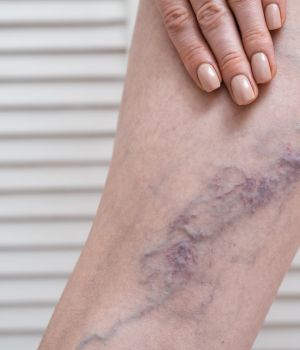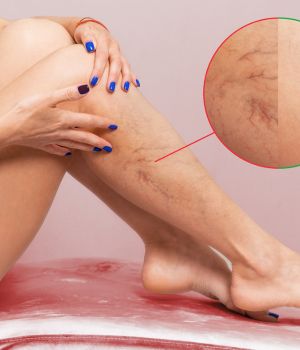Deep Vein Thrombosis (DVT) is a serious condition where a blood clot forms in a deep vein, usually in the legs. If left untreated, clots can travel to the lungs and cause a life-threatening pulmonary embolism (PE). Early diagnosis and treatment restore circulation, prevent complications, and protect your overall vascular health.
Why Vascular Health Matters?
Blood clots in deep veins can block circulation, leading to swelling, pain, and tissue damage. A dislodged clot can cause a pulmonary embolism, which can be fatal. Timely intervention reduces risks, improves symptoms, and safeguards long-term health.
What is Deep Vein Thrombosis (DVT) Treatment?
DVT treatment focuses on preventing clot growth, reducing symptoms, and avoiding life-threatening complications. Approaches include anticoagulation therapy, minimally invasive catheter-based procedures, thrombolytic therapy, and lifestyle modifications. Early treatment ensures safer outcomes and faster recovery.
Steps of Treatment
- Consultation & Diagnosis: Detailed exam, duplex ultrasound, and blood tests (D-dimer) to detect clot presence.
- Treatment Plan: Customized based on clot size, location, risk factors, and overall health.
- Procedure: Anticoagulation therapy or catheter-directed thrombolysis for severe cases.
- Recovery: Monitored care to manage clot resolution and prevent complications.
- Follow-Up Care: Imaging, medication adjustments, and lifestyle guidance to prevent recurrence.
Types of Treatment / Procedure Variations
- Anticoagulant Therapy: Blood thinners to prevent clot growth and reduce PE risk.
- Thrombolytic Therapy: Catheter-delivered clot-busting medications for extensive or dangerous clots.
- Inferior Vena Cava (IVC) Filter: A Temporary or permanent filter to prevent clots from reaching the lungs.
- Compression Therapy & Lifestyle Modifications: Graduated compression stockings, exercise, and diet changes to support circulation.
When You Should Come to Us
Seek care immediately if you notice:
- Swelling, redness, or warmth in one leg.
- Sudden or unexplained leg pain.
- Shortness of breath, chest pain, or rapid heartbeat (possible PE).
- Recent surgery, prolonged immobilization, or family history of clotting disorders.
How the Treatment Works
- Assessment & Imaging: Detect clot location, size, and blood flow restrictions.
- Treatment Administration: Medications or catheter interventions based on severity.
- Recovery & Monitoring: Monitor for bleeding, clot resolution, and recurrence risk.
What Is Our Service Here?
- Personalized evaluation and risk assessment.
- Advanced imaging and diagnostics.
- Minimally invasive catheter-directed treatments when indicated.
- Comprehensive post-treatment monitoring and follow-up.
Management and Aftercare
- Medications as prescribed.
- Lifestyle modifications: activity, hydration, and diet.
- Regular imaging to ensure clot resolution and prevent recurrence.
- Education on early warning signs for PE.
Insurance & Cost Plan
- Coverage: Most medically necessary DVT treatments are covered by insurance.
- Verification: Costs vary by plan; call our office for confirmation.
- Elective / Preventive Procedures: Cash-pay options may apply.
- Payment Options: Flexible self-pay and financing plans available.
Dos and Don’ts After Treatment
Dos:
- Take anticoagulants exactly as prescribed.
- Attend all follow-up appointments.
- Wear compression stockings if recommended.
Don’ts:
- Skip medications or monitoring
- Ignore leg swelling, pain, or shortness of breath
- Engage in prolonged immobility without precautions
Is It Curable?
While the underlying risk factors may persist, DVT can be effectively treated and managed. Early intervention prevents complications such as pulmonary embolism or post-thrombotic syndrome.
What Questions Should I Ask My Surgeon / Healthcare Provider?
- What treatment is best for my type of DVT?
- How long will I need anticoagulation therapy?
- Are there minimally invasive treatment options?
- How can I prevent future clots?
- When can I safely return to normal activity?
Expected Results
- Symptom relief within days to weeks.
- Prevention of clot growth and pulmonary embolism.
- Long-term vascular health and recurrence prevention.
Benefits of Our DVT Program
- Expert care from the best vascular surgeon in Houston, Texas.
- Advanced diagnostics and minimally invasive treatment options.
- Personalized treatment plans and continuous monitoring.
- Improved long-term circulation and reduced risk of life-threatening complications.
Why Choose Us?
Our Houston, Texas clinic provides expert DVT care with advanced diagnostics, minimally invasive treatments, and personalized plans. We focus on clot resolution, pulmonary embolism prevention, and long-term vascular health.
Frequently Asked Questions (FAQ)
Is DVT treatment safe?
Yes, modern anticoagulation and minimally invasive procedures are highly effective and safe.
How soon can I resume normal activities?
Most patients resume daily activities in a few days to weeks, depending on severity.
Can DVT recur?
Yes, but with proper medication, lifestyle changes, and monitoring, recurrence risk is greatly reduced.
Schedule Your Appointment
If you suspect DVT or have risk factors, early treatment is critical. Contact our Houston, Texas clinic today to schedule your consultation and protect your vascular health.


